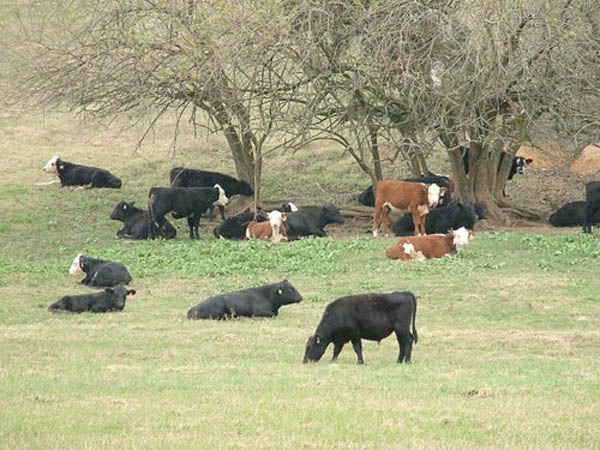November 16, 2010

Feed typically accounts for 60 percent of the total yearly cost of cow ownership according to Eldon Cole, livestock specialist, University of Missouri Extension.
"It shouldn't be a surprise that the greatest savings for cattlemen can be achieved by saving on feed expenses," said Cole.
But what may come as a surprise is the fact that the best savings steps cattlemen can take can be boiled down to 12 words that explain how it's done: weigh, test, body condition score (BCS), sort, cull, stockpile, strip-graze, observe, and shop.
Weigh your hay supply: Most farmers have a rough idea what their bales weigh, but Cole recommends at least weighing some representative bales from each lot of hay. "Bales can lose significant dry matter in storage, especially if not protected. If your hay supply indicates the need to buy hay, buy it by weight, not by the bale unless several are weighed first," said Cole.
Test your hay for nutrient content and nitrate level: This helps determine which class of cattle the hay is best suited for. The hay test will cost about $18 per sample for the basic protein, energy, moisture and nitrate evaluation. "The testing is critical if you purchase hay. Buy quality legume or grass legume hay. Alfalfa hay may be cheaper than some concentrates," said Cole.
BCS your cow herd and pick out those cows in a BCS of four or lower: A four cow has most of her ribs visible and backbone showing. "Cows this thin should be fed high quality forage or supplemented with concentrates in order to put on 100 to 150 pounds by her next calving. Should you find fleshy, 7-BCS cows, they could be put on a diet unless they've just calved," said Cole.
Sort the various BCS and lactation group cows into separate feeding groups: Since young, very old and thin cows have greater nutrient needs, put them in a pasture or lot together. "Do not allow fall calvers and spring calvers to run together. It is also a good idea to provide ample space around bale rings so timid cows can eat," said Cole.
Cull cows that do not fit your plans for the next year: These could be open cows, bad uddered cows, those with attitude problems or those whose time has come to move on, based on weaning weight and breeding records. "Don't put much feed in the cows you are going to cull unless you see a chance to enhance their salvage value after Jan. 1," said Cole.
Stockpile forage for winter grazing: The protein content will be 14 percent or better and the energy levels typically run in the 60 percent TDN, (total digestible nutrient) range on stockpiled pasture. "Each inch of top growth on stockpiled good fescue will have in the neighborhood of 300 pounds of dry matter per acre. It's possible to have at least .75 to 1 ton of grazing forage available per acre or more," said Cole.
Strip-grazing: The stockpiled fescue will achieve the greatest use.
Observe the cattle closely to note condition changes: "This helps you decide if a feed change is needed. Even better than observing would be to use a scale to measure weight changes," said Cole.
Shop around if hay or concentrate supplements must be purchased: There's considerable variation in the way different stores or farmers price their feeds. "The greatest supplement need for cattle is energy. Many think protein is the biggest need, but if you test your forage and study the protein and energy needs on the charts, energy is most likely the problem area," said Cole.
You May Also Like




